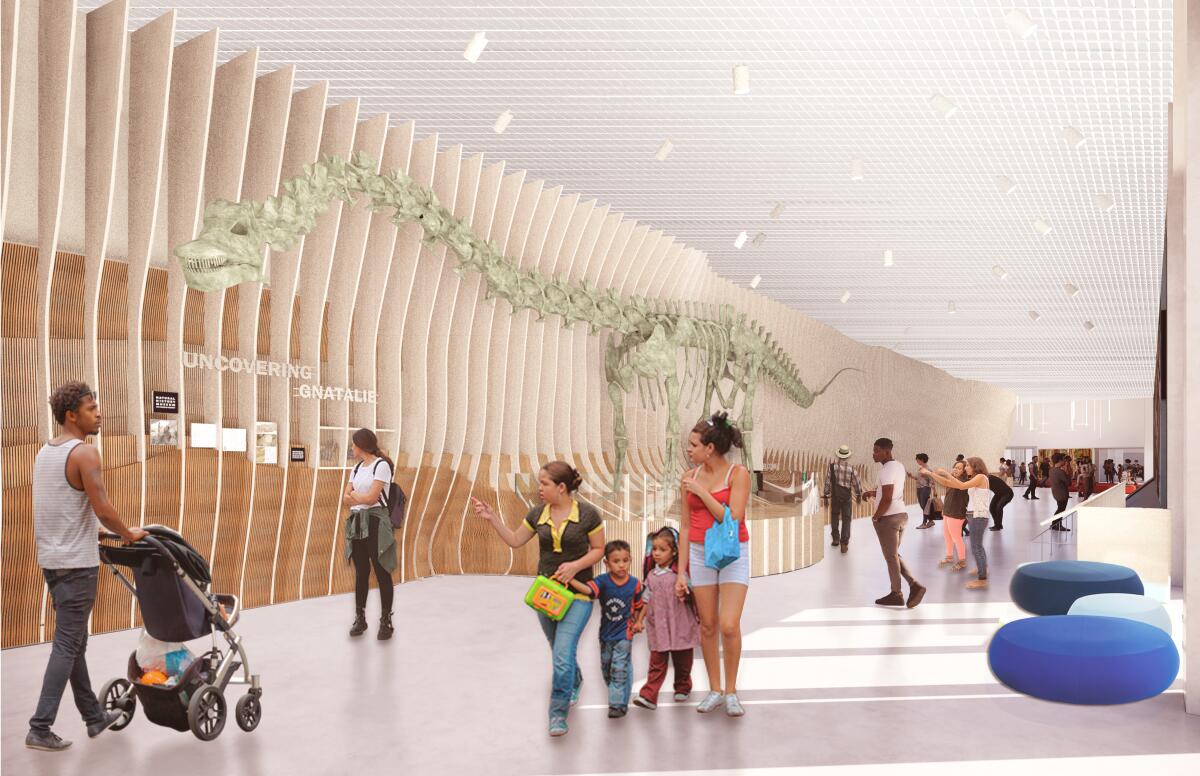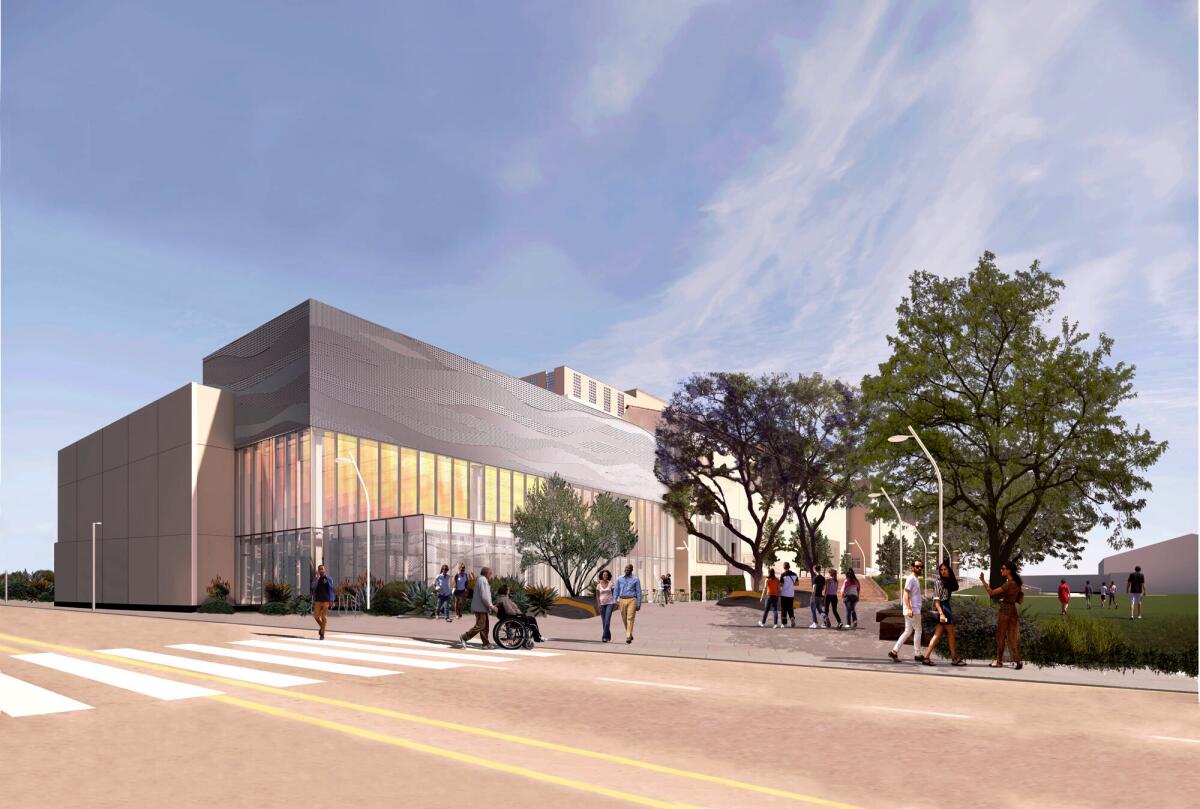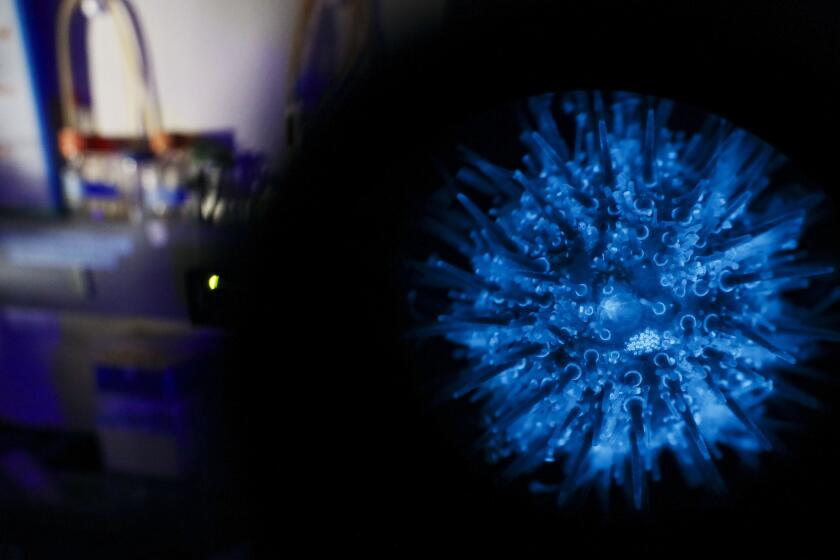You can help name L.A.’s newest dinosaur fossil. Just don’t call it Dino McDinoface

Sage? Esme? Gnatalie?
The Los Angeles County Natural History Museum is seeking the public’s help in naming a 70-foot-long sauropod skeleton unearthed by the museum’s paleontologists.
The dinosaur will be the focal point of the NHM Commons, a $75-million welcome center currently under construction on the southwest end of the museum in Exposition Park.
Slated to open this fall, the Commons will offer gardens, an outdoor plaza, a 400-seat theater and a glass-walled welcome center that can be toured without a ticket.
Its centerpiece is the sauropod, whose late Jurassic remains were found in southeast Utah and collected by museum paleontologists between 2007 and 2019. The long-necked, long-tailed dinosaur appears to be part of a new species, similar to the Diplodocus, which will be scientifically named in the future.
Currently under construction at the museum, the skeleton is made up of about 350 fossils from six animals whose bones washed into a river after death some 150 million years ago and commingled.
How to vote
Online poll is open to name Natural History Museum dinosaur fossil
The voting is open until Thursday, June 20. You can choose from five names.
Thanks to celadonite minerals that replaced organic matter during the fossilization process, the fossils are a striking emerald green, unique to this specimen.
Museum staff have long referred to the dinosaur internally as “Gnatalie,” a reference to the relentless gnats that plagued the dig site during the excavation. As its debut approaches, it’s time to turn the dinosaur over to the public.
“We want the people of Los Angeles to feel that this completely unique green giant is theirs, because it is,” said Lori Bettison-Varga, president and director of the Natural History Museums of Los Angeles County. “It’s not every day you build a more than 75-foot-long green dinosaur skeleton.”
Architect Frederick Fisher has worked on cultural projects that include the Getty Villa, the Huntington and MoMA PS1. Now his studio is helping refresh the Natural History Museum.
In an online poll that runs through June 20, voters can choose from one of five names selected by museum staff:
- Gnatalie: A nod to the original quarry, and the scientists, students and community members who participated in the excavation (and endured the bugs).
- Sage: An iconic green L.A. native plant that is also grown in NHM’s Nature Gardens.
- Verdi: A derivative of the Latin word for green whose variations appear in multiple languages.
- Esme: Short for “Esmeralda,” the Spanish word for “emerald.”
- Olive: Olive trees are green, like the dinosaur, and a symbol of peace in many cultures.

By limiting voting to a few pre-approved choices, the museum seeks to avoid the pitfalls of previous naming campaigns that have allowed more latitude for the public’s creativity. Few have forgotten a U.K. government agency’s 2016 online poll to name a $287-million polar research vessel, which yielded a landslide vote for the name “Boaty McBoatFace.”
Despite voters’ overwhelming preference for Boaty over dignified, pre-approved suggestions like “Shackleton” and “Endeavour,” the U.K.’s Natural Environment Research Council ultimately overrode the will of the people and christened its ship the R.R.S. Sir David Attenborough, after the beloved British television host and natural historian. (In a concession to the popular vote, the NERC agreed to grant the McBoatFace moniker to one of the ship’s three autonomous submarines.)
The winning name will be announced on June 25.
A success at Scripps in San Diego means scientists can run experiments on painted sea urchins, potentially unlocking new discoveries in biology.









